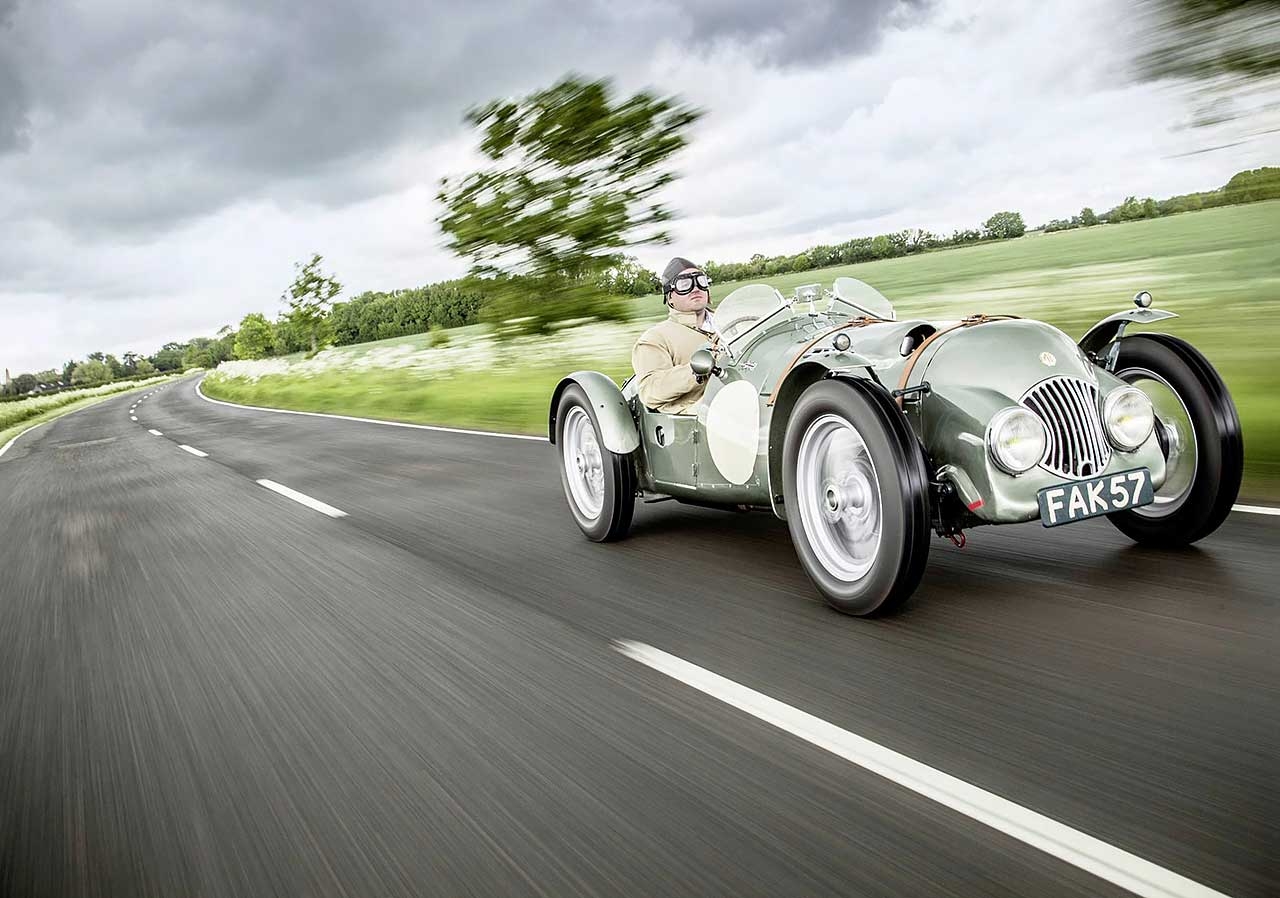
Return of The Underdog MG TC Le Mans special hits the road. A privately-entered MG TC special rocked the Le Mans establishment in 1950. We drive the recreation that plans to repeat the feat later this year. Words Gareth Evans. Photography Charlie Magee.
COVER MG TC Special We drive a recreation of the privately owned MG TC special that took Le Mans by storm in 1950 – and whose owner is hoping to repeat history at La Sarthe later this year.
Approaching the limits of the Blockley three-stud tyres’ adhesion, I’m aware that all four begin to lose lateral grip at roughly the same time so I’m going to have to use the throttle to retain control of my cornering trajectory. The back end will swing out if I’m heavy-handed with the right pedal but it’s equally easy to get the front washing wide if I barrel into a corner a little too eagerly. Driving this car quickly is brilliant fun, but it’s going to take some balls to drive it at race pace exactly what I’m going to be doing later this year when I co-drive this recreation of a very special MG TC at the circuit where the original made its mark.
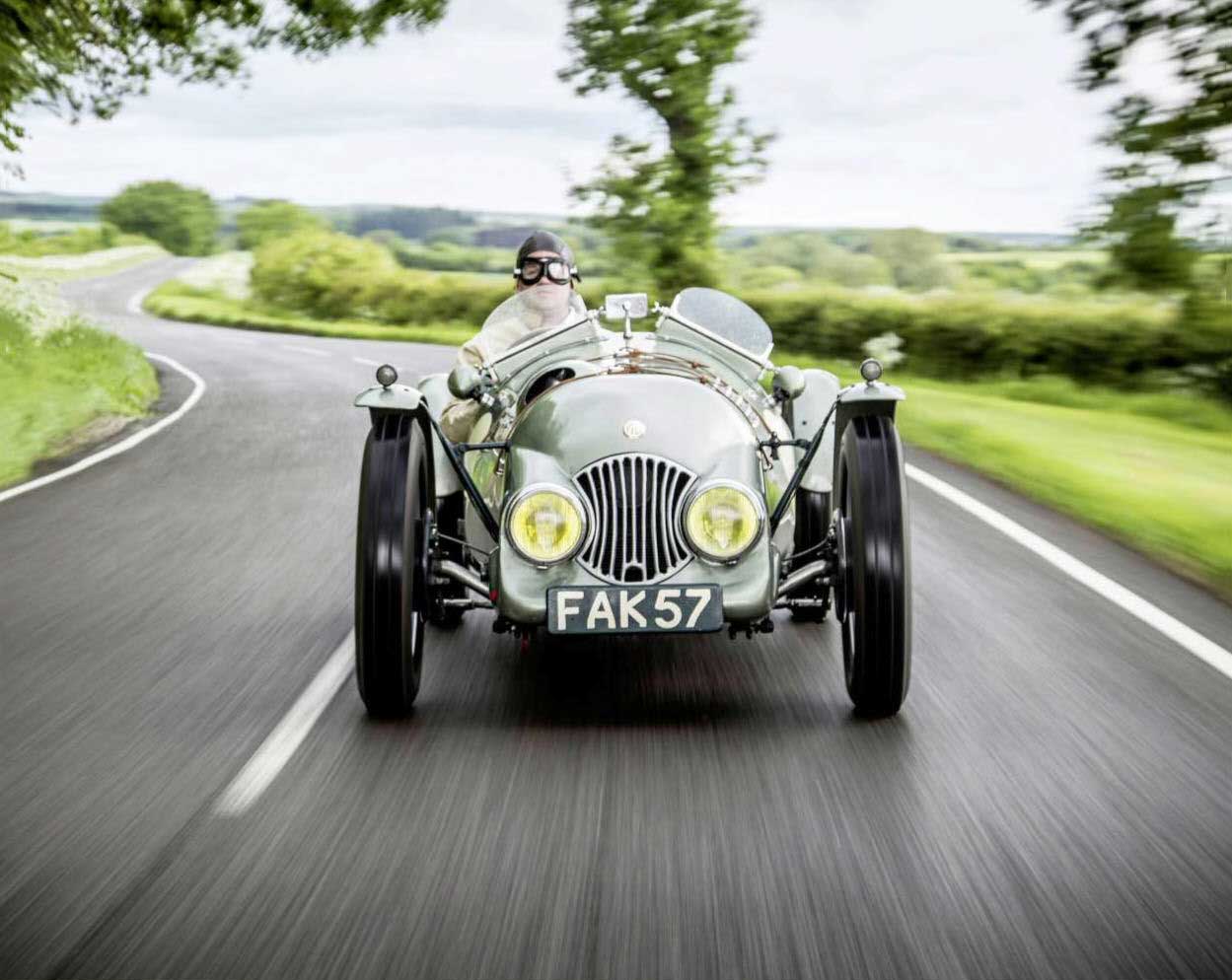
It was the car many consider to be the godfather of low-budget racing in the UK. The original was campaigned during the Forties and Fifties by Autosport magazine’s chief photographer and motor racing enthusiast George ‘Spud’ Phillips. He dreamed of mixing it with the big boys at Le Mans and his success created a new era for MG – and club racing generally.
Following a difficult and protracted period during which this car was recreated as accurately as it’s possible to do from old photos – and a red herring scale model that turned out to be wholly inaccurate – you’re looking at a transformed FAK 57. Later this year I’m joining owner Simon Evans at Classic Le Mans to mark Phillips’s successful 1950 Le Mans race, though we’ve yet to decide who’ll take the role of Spud.
I nudge the car out of a side road and onto our test route on Cambridgeshire’s B-roads to allow the engine to get up to temperature. The first thing I notice is that the TC’s turning curcle is enormous. Its 19-inch wheels – built just up the road in Peterborough by Turrino – don’t help manoeuvrability but its owner has added a revised steering rack with two and a half turns from lock-to-lock rather than the previous two. It should help me catch unintentionally extravagant oversteer. That’s what I’m expecting in the heat of battle through the famous Dunlop Curves at any rate.
As the MG’s water temperature needle’s gradual climb finally stops I know I’m only minutes away from being able to find out what it’s really capable of. I have to drive slowly initially to allow the XPAG engine’s oil temperature to catch up with the water and discover that this is a difficult car to love at low speeds. The worm-and- peg steering is at its worst and the leaf springs transmit every single bump in the road directly through the seat of my overalls.
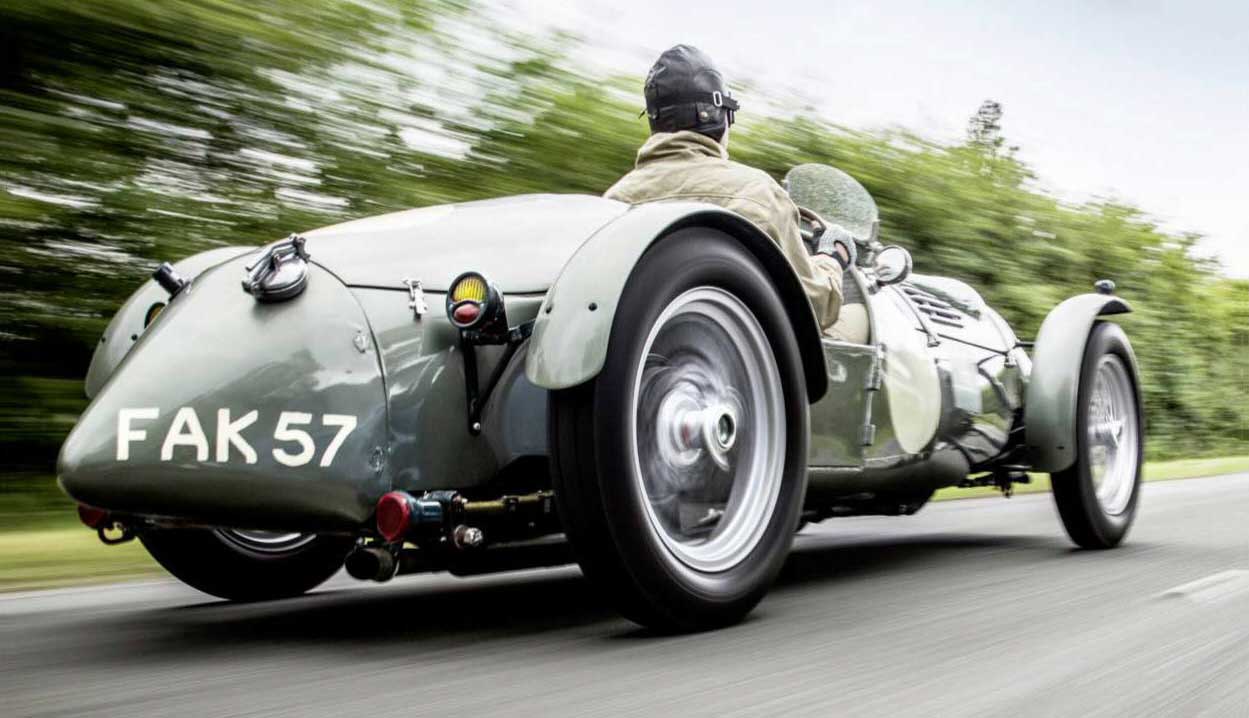
With the oil needle pegged though we’re finally ready for action. Its power delivery tails off at 5100rpm – 100rpm earlier than the standard XPAG – but the race-tuned pushrod four-cylinder engine feels surprisingly lively. It sounds the part too with an exciting off-beat thrum that climbs in intensity with the revs once the aggressive race camshaft is up to speed, delivering instant extra thrust. I can already imagine myself buzzing out of Le Mans’ Ford chicane and across the start/finish line in this car.
The engine’s character lives up to the looks – it’s quite theatrical at speed and it’s clear there’s a significantly larger area under the torque curve than you’d find on a standard TC. It takes off like a shot with plenty of in-gear acceleration thanks to the 4.2:1-ratio differential that the owner has installed. This means I don’t have to change gear as often but when I do the change is solid – the shift lever is half the length of a regular TC’s and requires little more than a flick of the wrist between de-clutches to secure another of the four ratios through the standard H-pattern gate. Heel-and-toeing is equally rewarding but the pedal box isn’t exactly accommodating – fancy footwork in my size tens is a constant game of contortion.
I find the handling at higher speeds difficult to fault as I throw it into a slightly damp shaded corner. This car has leaf springs with Leda dampers, much as the standard car would have had in period but it feels very well-mannered at speed, if a little bumpy on British B-roads. That steering initially feels vague on turn-in because – as with a lot of cars of this vintage – there’s a dead spot the instant you turn in before any sort of meaningful feedback materialises through the period wooden wheel; it’s difficult to muster much confidence when you’re not entirely sure in which direction the 19-inch wheels are pointing.
The hydraulic brakes lack conviction and cause the TC to dart alarmingly to the left when I really lean on them, something that will be rectified. I’ll hit the circuit later to experience this particular improvement for myself – and to see exactly how its chassis copes with corners at racing speed – long before Le Mans. The FIA’s regulations for the Historic Technical Passport make it abundantly clear that more sophisticated suspension, body or chassis strengthening isn’t allowed so I suspect bravery is going to play a major part in any real speed I find.
But why recreate this particular car? It’s all about the great British underdog. Back in the Forties the idea of adapting a road-going car into a racer was the pursuit of conglomerates or ultra-well-heeled individuals until Phillips built his special. Spud and his TC brought motor racing to the masses despite the austerity in the wake of both world wars. In a roundabout way it also helped to pull MG’s fortunes back from the brink after tempestuous war years spent building tanks, aeroplane parts and other military equipment at its Oxfordshire factory.
The UK was chock-full of bored US Airforce personnel after the war, many of whom loved the TC’s traditional British sports car looks, mechanical simplicity and – at £527 in 1947 – low price. This enthusiasm cemented the TC’s – and thus MG’s – popularity in the US and beyond; it eventually outsold any other car built so far at Abingdon with 10,001 TCs finding homes. An American craze for British sports cars was born.
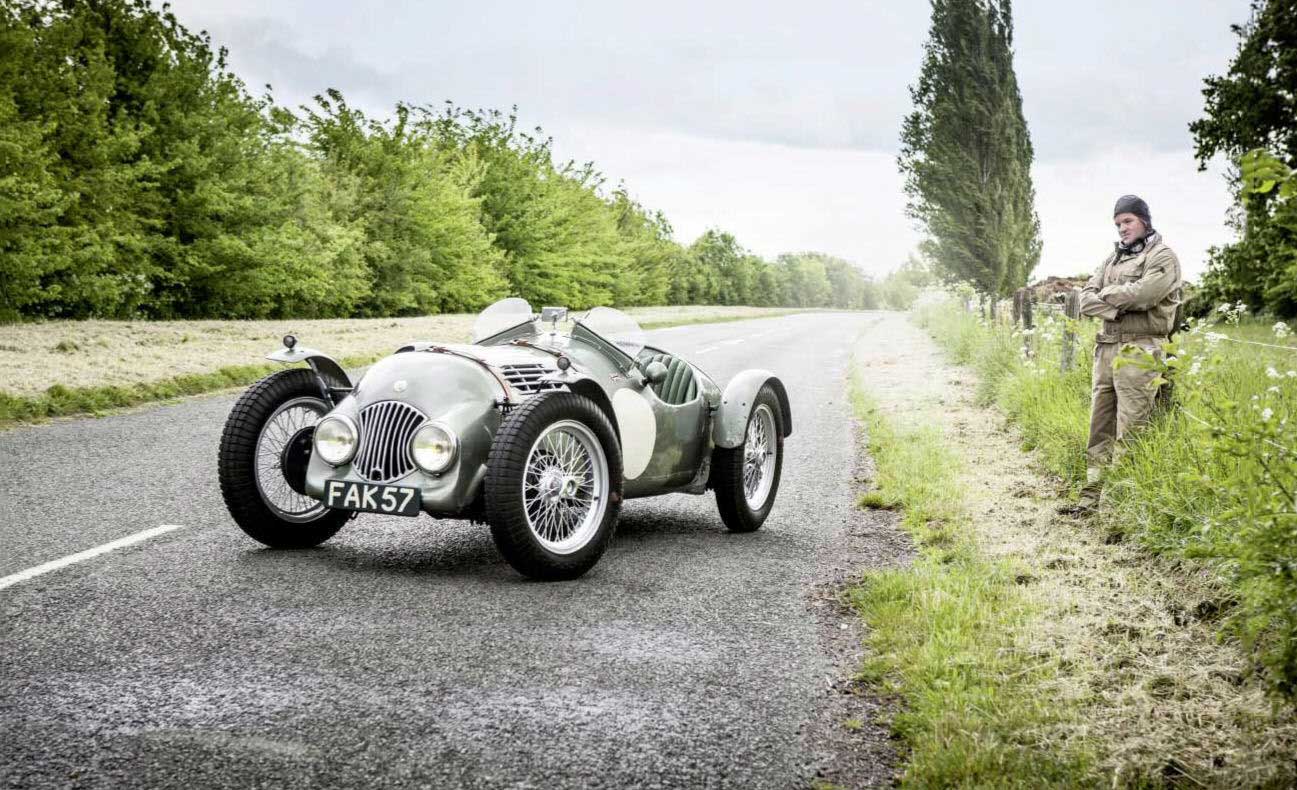
Phillips’ early attempts to race a normal roadgoing TC proved unsuccessful so he turned to renowned MG special builder Harry Lester to create a sleek new body while he got on with tuning the engine. He entered his new special into a race at Goodwood in 1948 and found himself up against some fearsome rivals. Phillips snatched a non-supercharged sports car class victory at the very meeting where a young Stirling Moss fought his first serious circuit race in a 500cc Cooper-JAP – and MG made club racing history.
This was the first motor race in the south of England for almost nine years so it attracted extremely enthusiastic spectators, even if the races comprised just a handful of laps each. Phillips’ car came fifth in the Isle of Man Manx Cup Race later that year and went on to win the Brighton Speed Trials and the 12hr Trophy race at Montlhéry in northern France.
These successes in the post-war era meant that MG became a paragon of low-cost motor sport and the everyman ticket to a life in the racing paddock; if this plucky Brit could compete with factory-funded might from the big boys then anyone could.
After Montlhéry Phillips’ next – and rather more ambitious – goal was Le Mans, but one look at the regulations made it clear that the TC wasn’t suited. Undeterred, Spud enlisted the help of Londoner Ted Goodwin who rebodied the MG so it would qualify as a sports car to race. It was considerably lighter than before, which accounted for much of its extra new-found performance.
Phillips’ first Le Mans outing in 1949 ended in ignominy and disappointment when he and co-driver Curly Dryden were disqualified for receiving help while fixing the car out on the circuit. Phillips took on a new co-driver – Eric Winterbottom – the following year and the two finished second in class and 18th overall having completed 1760 miles at an average speed of 73mph. This generated titanic worldwide publicity for MG and the Abingdon factory was sufficiently impressed to take Phillips on as a works driver and bring the TC special in-house as a prototype test vehicle. Rumour has it that it was eventually developed into the MGA.
It ended well for Spud, but what of our planned adventures across the Channel? Classic Le Mans’s rigorous scrutineering has a very specific brief and offers little room for manoeuvre, so while there’s a tube-frame chassis under the bespoke aluminium body, many of the other parts – including the dampers and axle – are from a conventional road-going TC and the engine remains in its original position. Phil Cornut was responsible for most of the build and says, ‘If I had been putting together an ordinary racing TC, I would probably have started by moving the engine back in the chassis, fitting a set of 15-inch wheels and maybe recoring the radiator – there are many modifications you can make. But with this project we wanted to stay as close to the standard car as possible. It even has a traditional copper radiator.’
The handcrafted bodywork had to be developed from scratch with only poor-quality period photographs and a notoriously inaccurate scale model to work from. The panels are made from slightly thicker metal than the original car’s 20-gauge aluminium in a bid to dial out some of the flex. ‘This isn’t a standard restoration,’ says Cornut. ‘It has been built along the lines of a proper race car rather than a modified TC.’
MG engine specialist Peter Edney built the race-tuned engine with a Phoenix crankshaft and H-section conrods, racing pistons, a polished and ported cylinder head, improved oil supply and twin 1½in SU carburettors. The 1949 factory booklet Special Tuning for the MG Midget Engine Type XPAG states that an unsupercharged engine tuned to stage four and running on 10 per cent methanol and 1.25 jets should be capable of up to 83bhp – which is what this recreation is currently producing – well up on the 54bhp it would originally have had. It’s built to race, but reliability is key; the brief was to create an engine that wasn’t running on the ragged edge all the time so it stands a better chance of surviving historic endurance races to come.
Racing at Classic Le Mans isn’t going to be easy – we’ll be competing in Plateau 2 against much faster Jaguars, Ferraris and the like. Spud Phillips’ MG was one of the underdogs at Le Mans back in 1950 – this recreation will be no different in 2016.
Thanks to: Stewart Penfound, author of Harry Lester, His Cars & The Monkey Stable
Tech and photos
Technical data file specifications 1947 MG TC SPECIAL
Engine 1250cc, in-line four cylinder, ohv, two 1½in SU carburettors, polished and ported cylinder head
Power and torque 83bhp @ 5100rpm;
Torque N/A
Transmission Four-speed manual, rear-wheel drive, 4.2:1 differential
Steering Worm-and-peg
Suspension Semielliptic leaf springs controlled by Leda hydraulic dampers front and rear, three-quarter floating rear axle
Brakes Lockheed hydraulic drum brakes all round
Weight 600kg
Performance Top speed: 100mph; 0-60mph: 5.5sec (owner measurements)
Fuel consumption 10mpg
Cost new £527 (standard TC when launched in 1945)
Value now £100,000 (UK 2017)
‘Driving it quickly is brilliant fun but it’s going to take some balls to drive it at race pace – exactly what I’ll be doing this year’
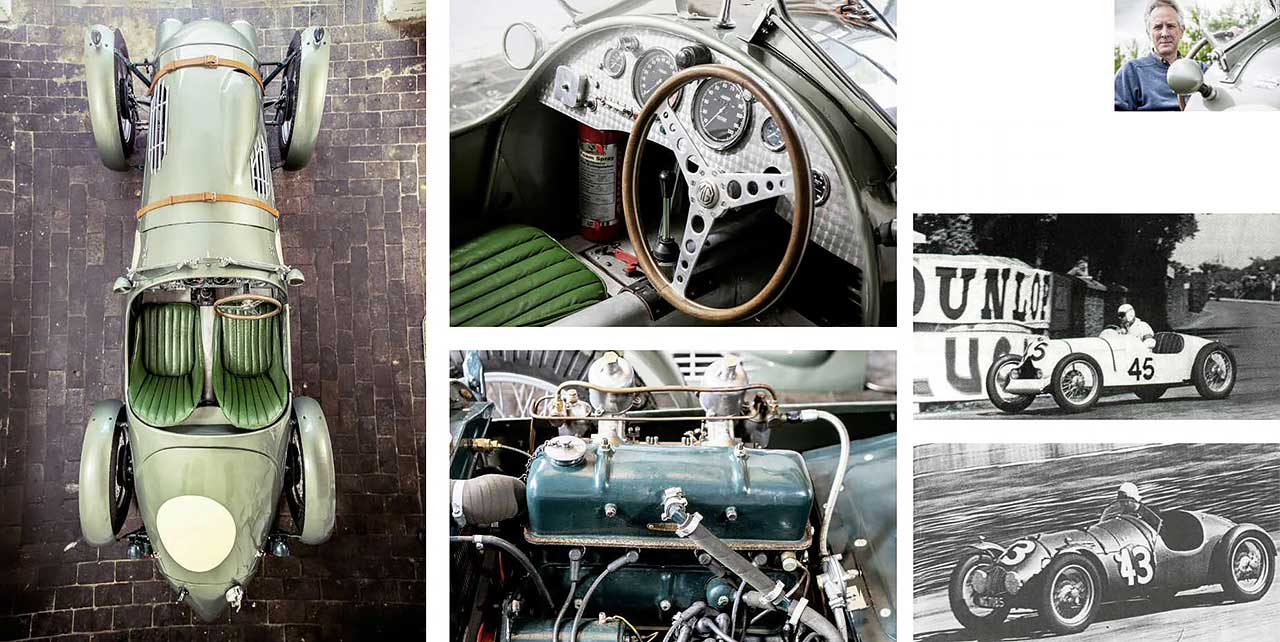
OWNING THE TC
‘I was talking to Phil Cornut about what to do after I’d sold the Montlhéry Midget C-type I bought from him a few years ago,’ says Simon Evans. ‘It was based on a D chassis and I only ever used it on the road.
‘By this time however I was toying with the idea of getting back into historic racing and mentioned to Phil that I’d always wanted to recreate the famous George Phillips MG TC Special.
‘He told me he knew where the remains of the crashed original were but that the guy who owned them wouldn’t release them. Despite this we decided on the spot that it was what we wanted to do – it would still be a fun road car but less fragile than the Midget and more practical into the bargain – well, as far as these things are ever practical!
‘We also hoped that it would get us into some exciting races and that’s certainly been the case. The most memorable of them all so far has unquestionably been the Goodwood Revival. Being on that famous grid and racing around the track was really exciting what with the crowds, the atmosphere and all the other cars on the circuit.
‘I finished 20th out of a starting grid of 30 cars in the Fordwater Trophy – not bad for the oldest car with the smallest engine in the race. It was a particularly special race for me because it took place some 67 years after Phillips’ won there outright in the original car.
‘The most fun I’ve had in it was on the Goodwood test day. I’d booked for the Saturday session but the day before was a complete washout. There’d been a number of crashes so the circuit was closed for the day. The forecast for the Saturday was much the same so hardly anyone turned up. The circuit is usually crammed during the timed sessions but I got there at 9am and only left when I’d finally had enough five and a half hours later. There were only ever four or five other cars on the track so I had the whole of Goodwood virtually to myself – it was absolutely brilliant!’
‘Getting it race-ready wasn’t completely straightforward however. Messing around with the differential ratios made a huge diference to how the car behaved at the Revival. I passed at least three cars before the first bend at Madgwick because the car was pretty quick of the mark for a car of its size and age. It certainly outdragged a few bigger and more powerful machines.
‘We took the view that it starts to get a bit naughty at anything over 100mph anyway so losing 10mph or 15mph from the top speed was a price well worth paying if it meant that the car got of the start-line more quickly.’





